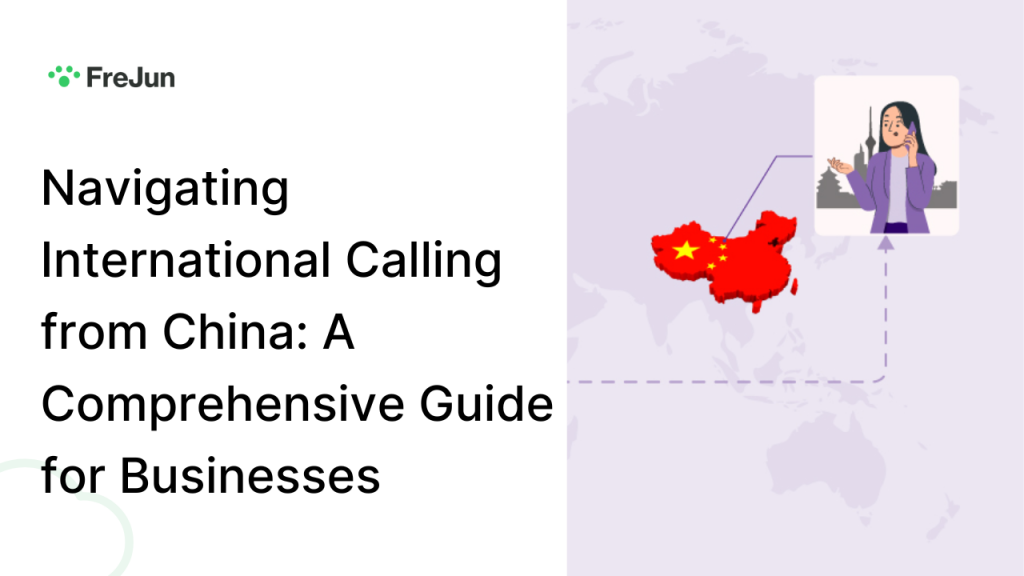Last updated on June 18th, 2025 at 01:40 pm
China, with its vast population and thriving economy, remains a key player in the global business landscape. However, for businesses operating in or with China, navigating the country’s complex telecommunications regulations and infrastructure can be a daunting task. Whether you’re establishing a new business in China or maintaining international communication with clients and partners, it’s essential to understand the unique calling systems and challenges involved. This guide provides a detailed roadmap for businesses on how to optimize their international calling strategy from China, ensuring International Calling Solutions while overcoming regulatory barriers and cost-related challenges.
With China being a major player in the global economy, businesses must ensure seamless International Calling Solutions. Whether dealing with clients, partners, or remote teams, reliable global calling solutions are essential. In 2025, various technologies, from VoIP services to AI-powered call automation like FreJun, enable businesses to navigate international calling efficiently.
Table of contents
What’s a Smart Way for Businesses in China to Handle International Calls?
A smart way for businesses in China to manage international calling is by leveraging VoIP platforms that reduce costs, increase call clarity, and offer business-grade features like call analytics and CRM integration. FreJun is one such solution that delivers seamless global communication, helping companies connect with clients and partners worldwide efficiently and affordably.
Optimizing International Calling: Strategies and Solutions

In this comprehensive guide, we’ll walk through the various traditional and modern methods for establishing an efficient international calling system in China. Whether you’re a new business entering the market or an established player, this guide will equip you with the knowledge to navigate the complexities and streamline your communications for greater success.
1. Traditional Methods for International Calls
When businesses start in China, they often lean on traditional calling methods due to familiarity and ease of use. While these services can be reliable, they often come with limitations, such as high costs and regulatory complexities. Below are some of the most common traditional methods for international calls in China:
Using IDD (International Direct Dialing) Services Through Chinese Carriers
International Direct Dialing (IDD) services are offered by major Chinese telecom providers like China Mobile, China Unicom, and China Telecom. These services allow businesses to directly make international calls by dialing the international access code (00) followed by the country code and phone number.
IDD Service Packages
IDD services from Chinese telecom providers often offer competitive pricing for international calls, especially for businesses that require regular international communication. Telecom companies provide subscription plans that include a set number of minutes for international calls, with additional minutes billed at standard rates. These packages may offer:
- Discounted rates for popular international destinations
- Free or discounted minutes for specific times of day
- Bundled offers that combine data, internet, and voice services
Costs and Considerations
While IDD service rates tend to be predictable, they can vary significantly depending on the destination. Calls to certain regions, such as the U.S. or Europe, may be more expensive than calls to neighboring Asian countries. It’s important for businesses to evaluate their calling patterns and select an IDD package that suits their needs. However, this method can still be costly, especially for small businesses that require frequent international communication.
International Calling Cards and Their Availability
Another traditional method for international calling is using calling cards, which are available from telecom providers, convenience stores, and online retailers. These cards allow businesses to make international calls with prepaid balances, typically offering lower rates than standard IDD services.
How It Works
To use a calling card, a business would first dial a local access number provided by the card. Then, after entering a PIN, the business can proceed to dial the international number. While calling cards offer a cost-effective way to make international calls, they do come with the inconvenience of an additional dialing step, and in some cases, are less reliable than direct IDD services.
Cost Considerations for Traditional Calling Methods
Despite offering potential savings, traditional methods like IDD and calling cards come with several drawbacks, including:
- Costly per-minute rates for calls, especially to certain destinations.
- Limited flexibility when it comes to scaling up international calling volume.
- Additional time-consuming steps involved in using calling cards.
- Potential for connectivity issues such as dropped calls or low-quality audio.
2. VOIP Solutions and Internet-Based Calling
Over the past few years, Voice Over Internet Protocol (VOIP) technology has become the preferred choice for businesses seeking cost-effective and reliable international communication solutions. VOIP allows calls to be made over the internet rather than traditional phone lines, offering several benefits, including lower costs, flexibility, and ease of integration with existing business tools.
Several prominent VOIP providers offer international calling services that can be accessed within China, despite the country’s strict internet regulations. These services enable businesses to make calls to clients and partners around the globe without relying on traditional phone lines.
Since China has a strict internet censorship policy known as the “Great Firewall,” many international communication services, including some VOIP platforms, are blocked. To access VOIP services like RingCentral and Cisco Webex, businesses often need to use a VPN (Virtual Private Network) to bypass these restrictions.
However, using a VPN in China comes with its own challenges, such as:
- Compliance issues: Only government-approved VPNs are legal in China.
- Potential performance degradation: VPNs can cause slower internet speeds due to additional data encryption and routing.
- Reliability concerns: Some VPNs are unreliable, leading to potential disruptions in communication.
Traditional Phone Services vs Modern AI-Driven VoIP Solutions
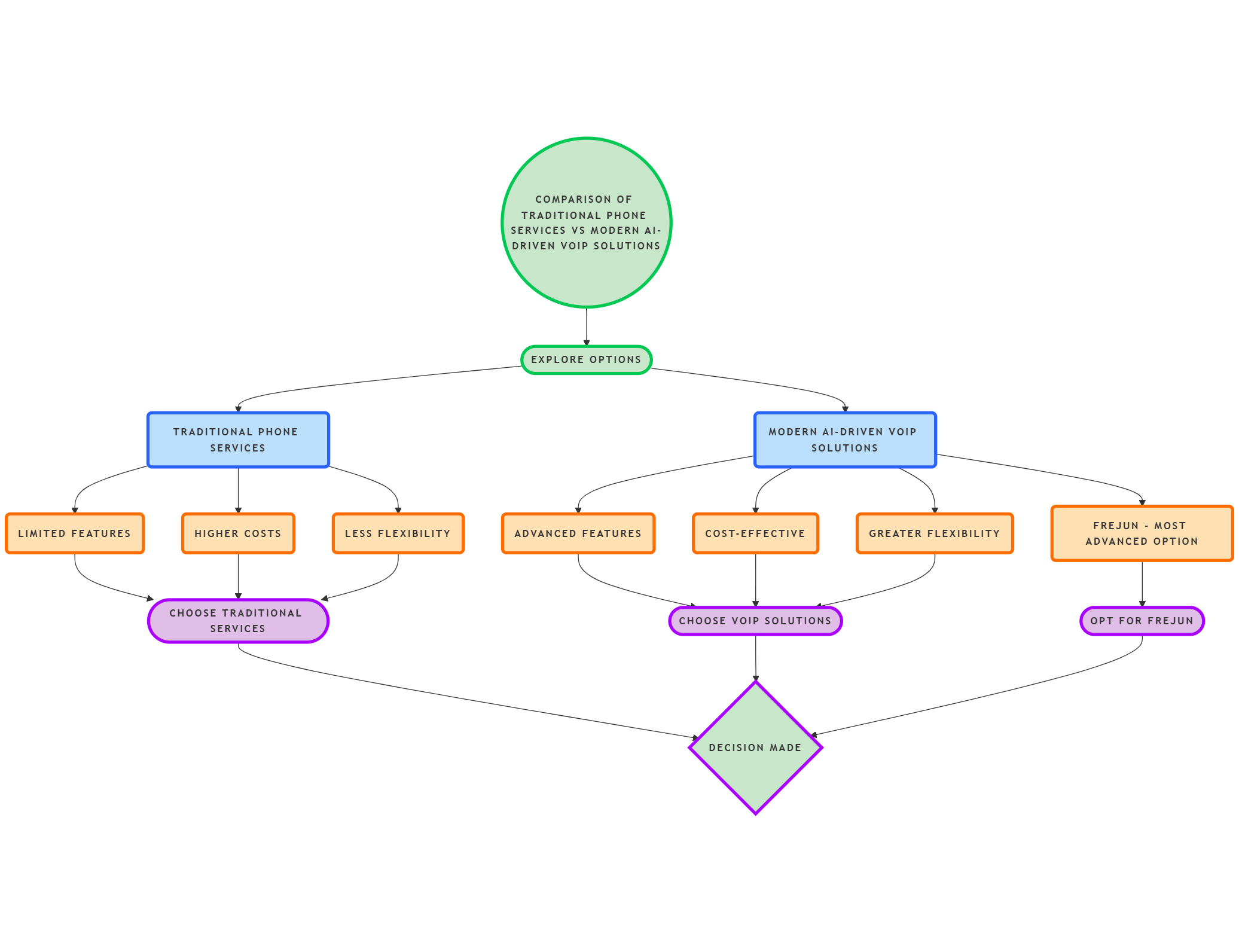
3. Mobile Apps and Messaging Platforms
With the proliferation of smartphones and mobile apps, many businesses now use mobile apps and messaging platforms for international communication. These apps can be particularly useful for businesses operating in or with China, as they allow for text-based communication, voice calls, and video conferencing on a single platform.
Business-friendly Messaging Apps Allowed in China
China’s telecommunications infrastructure also extends to mobile communication apps that are compliant with local regulations. These apps are commonly used for business communication:
- WeChat: By far the most popular messaging platform in China, WeChat offers a specialized business version called WeChat Work. This app supports messaging, voice calls, video conferencing, and document sharing, making it an all-in-one solution for businesses.
- Lark: Combines messaging, video conferencing, and collaborative document editingAn alternative to WeChat, Lark integrates messaging, video calls, and document collaboration into one platform. It’s widely used by multinational businesses for its simple interface and versatile features.
- Tencent Meeting: Robust video conferencing capabilities with high compliance standards
- DingTalk: Alibaba’s communication and collaboration platform for business use
Alternatives to Commonly Blocked Services
Some widely used international platforms are blocked or restricted in China. However, businesses can still find alternatives that serve similar functions:
- Zoom: The Chinese government has approved a localized version of Zoom, which is frequently used for video conferencing and webinars
- Signal: Secure messaging app with limited accessibility in China
- Telegram: Secure messaging option, but with intermittent availability
4. Setting Up a Business Communication System
Setting up a reliable international communication system involves understanding your business’s specific needs and weighing the pros and cons of various calling systems and tools.
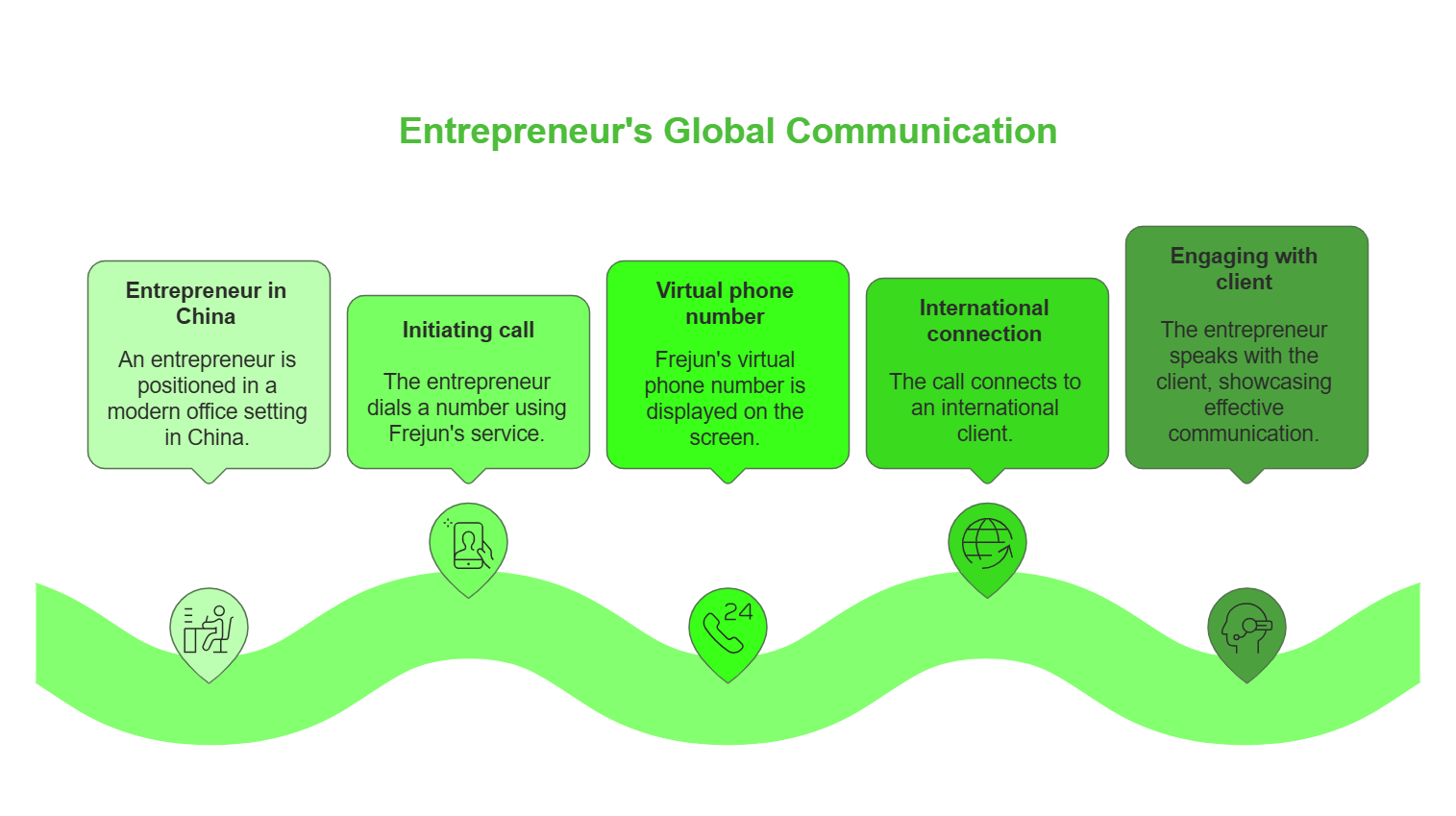
Choosing Between Local Carriers and International VOIP Services
When selecting a communication solution, businesses must consider:
- Service Reliability: Local carriers offer robust, nationwide coverage but often come at a higher price.
- Regulatory Compliance: International VOIP services may require VPNs to operate effectively in China.
- Cost-Effectiveness: International VOIP services can significantly reduce international calling costs.
Implementing a Reliable Backup Communication Strategy
Even with a primary communication solution in place, it’s critical for businesses to have a backup strategy. This could involve using:
- Calling cards for emergency situations where internet access may be unreliable.
- Redundant VOIP systems to ensure that communication remains uninterrupted, even if one service is down.
Best Practices for Managing International Calling Costs
- Negotiate corporate rates with telecom providers to reduce per-minute costs for international calls.
- Leverage cost-effective VOIP solutions for consistent savings on international communication.
- Monitor usage regularly to identify areas where businesses can cut costs or optimize their communication infrastructure.
5. Troubleshooting and Technical Considerations
Even the best-laid communication systems can encounter technical issues. Here’s how businesses can troubleshoot common challenges when it comes to international calling:
Common Connectivity Issues and Solutions
- Dropped Calls: Regularly check internet connection speeds to avoid issues with call quality. Implement a redundancy plan with multiple service providers.
- Call Latency: Use high-quality VPNs and monitor network performance to ensure minimal call delays. You can consider Surfshark vpn plans for high-quality VPNs.
Dealing with the Great Firewall’s Impact
- China’s Great Firewall is known for blocking certain platforms. Businesses need to plan their calling systems accordingly by using government-approved VPNs and exploring alternate communication platforms.
Maintaining Call Quality and Reliability
- Prioritizing VOIP traffic and regularly monitoring the network
- Implementing system redundancy with backup connections and multiple service providers
Key Factors Impacting International Business Calls from China
| Factor | Impact on Business Communication |
| Government Restrictions | Limited access to VoIP services |
| Call Quality | Connectivity issues due to internet filters |
| Data Security | Need for encryption and compliance measures |
| Cost Considerations | Expensive international call rates |
6. Solutions for Seamless International Calling
These are some of the best solutions for international calling:
A. FreJun
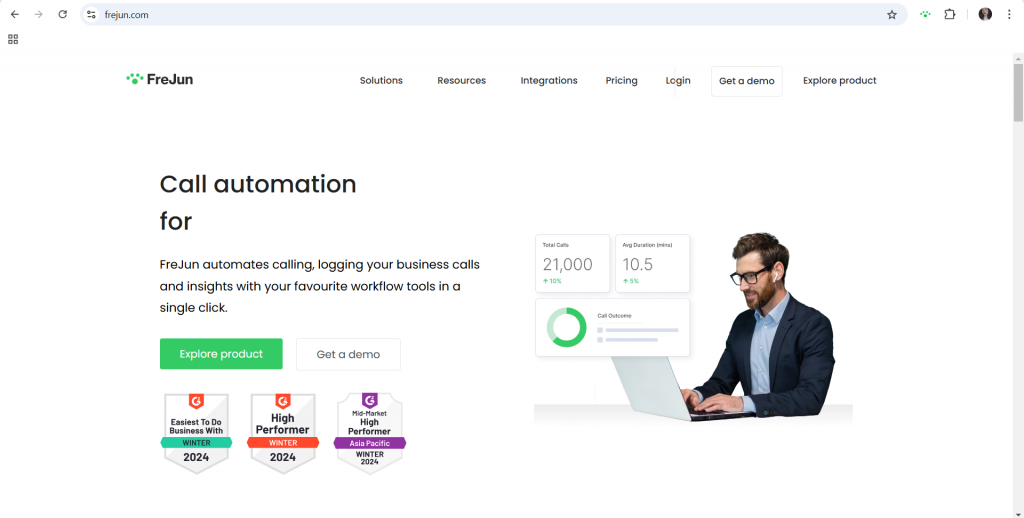
FreJun automates calling, logging your business calls and insights with your favourite workflow tools in a single click.
Key Features:
- Virtual number: Get a local or toll-free number for your business.
- Click to call: Initiate calls with just one click while browsing on the web.
- Call transcript: Automatically transcribe call recordings for future reference.
- CRM/ATS integration: Make calls directly from your CRM/ATS.
- Autodial: Automatically dial a list of phone numbers.
- Reports & Analytics: Analyze call data and agent performance.
- Call routing: Automatically route calls to the right agent/department.
- Voice broadcast: Reach hundreds of contacts in one go with pre-recorded messages.
- AI insights: Use AI to analyze call data and improve your call operations.
Pricing: FreJun offers a range of pricing plans to suit businesses of all sizes. Plans start at $14.49 per month.
G2 Rating: FreJun has a 4.9/5 rating on G2.
B. RingCentral
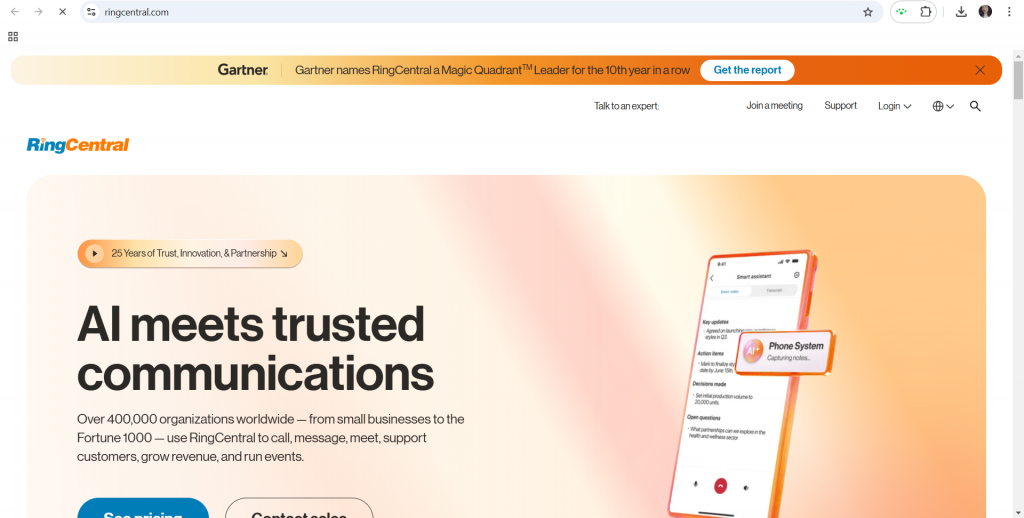
RingCentral is a leading VOIP provider offering a comprehensive suite of business communication tools.
Key Features:
- Unified communications platform with phone, video, and messaging
- Integrations with popular business apps like Microsoft 365, Google Workspace, and Salesforce
- Robust call management features like auto-attendant, call routing, and voicemail
- Team messaging and collaboration tools
- Video conferencing with screen sharing and virtual backgrounds
Pricing: RingCentral offers several pricing plans starting from $20 per user per month.
G2 Rating: NA
C. Cisco Webex

Cisco Webex is a premium VOIP solution known for its enterprise-grade video conferencing and communication capabilities.
Key Features:
- High-quality video conferencing with advanced features like virtual backgrounds and meeting recordings
- Robust security and compliance features for regulated industries
- Seamless integration with Microsoft 365 and other business tools
- Scalable solutions for large enterprises and events
- AI-powered features like noise removal and real-time translation
Pricing: Cisco Webex pricing starts at $15.30 per user per month.
G2 Rating: NA
Conclusion
Navigating the complex landscape of international calling from China requires a comprehensive understanding of the regulatory environment, available solutions, and best practices. By leveraging the insights and strategies outlined in this guide, businesses can establish a robust communication system that empowers seamless global collaboration, enhances productivity, and drives business growth within the Chinese market.
Remember, the key to success lies in adaptability, redundancy, and a willingness to explore innovative solutions that align with the unique demands of operating in China’s telecom landscape. Stay informed, embrace the right tools and technologies, and continuously optimize your international calling infrastructure to thrive in this dynamic business environment.
Further Reading: How to Get US Numbers in Australia: Staying Connected Across Continents
Frequently Asked Questions
Yes, it is legal to use a US virtual number for business or personal use. Providers like FreJun make the process quick and compliant.
VoIP platforms like FreJun provide lower costs, mobility, call recording, and international number access.
Using a reputable provider such as FreJun, which optimizes call routing and audio quality, ensures clear calls.
Yes, especially for international client interaction, customer support, or accessing US-based services. FreJun helps streamline this communication efficiently.
Not at all. Providers like FreJun offer guided setup, so you can activate and start using your number in minutes.
Sometimes yes, depending on internet restrictions. FreJun has support options to help users access their platform reliably in such cases.
Providers like FreJun use encryption and security protocols to protect all business communications.
Subhash is the Founder of FreJun, the global call automation platform. With 8+ years of entrepreneurial experience, FreJun was established to help customers with their voice communication needs. The goal of FreJun is to develop cutting edge technology and solutions to help customers.
